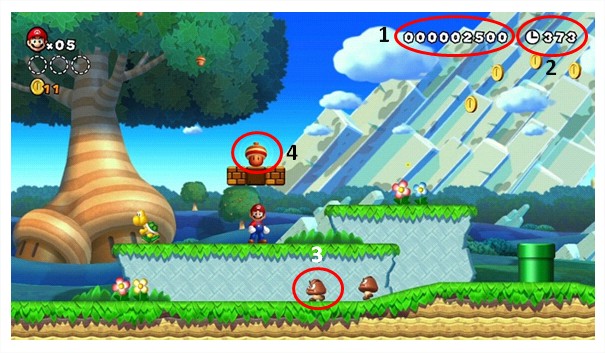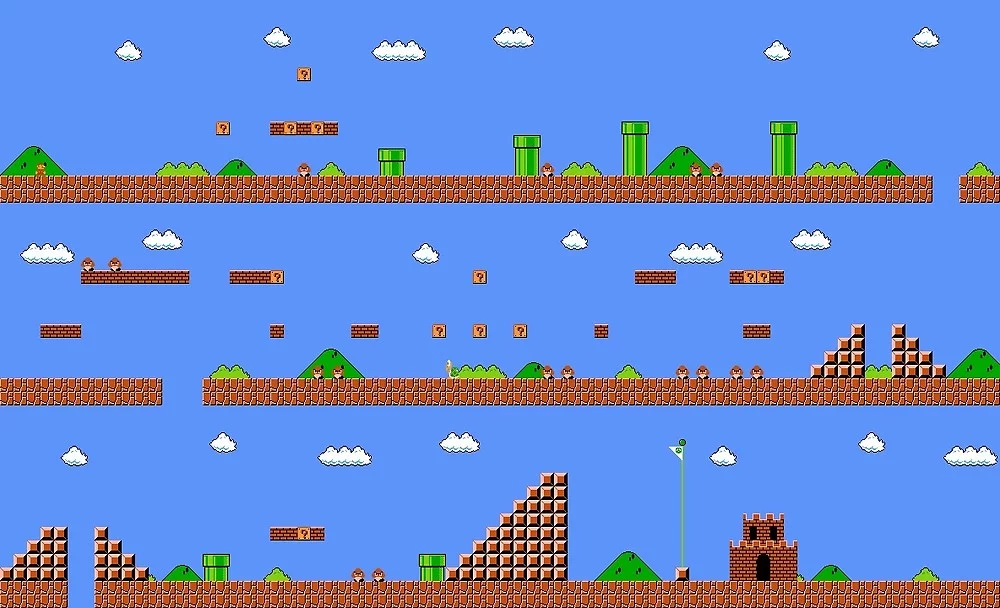I’ve probably mentioned this in the past, but Super Mario (for me) has one of the best on-boarding experiences of any game I’ve ever played.
But let’s start at the beginning.
What’s On-boarding?
On-boarding, in this context, is the way the game introduces the player to the rules of play. It is how the game teaches you what to do, without having to rely on pages and pages of text in a manual.
Mario, designed by games design genius Shigeru Miyamoto, was one of the first games I played where the instructions consisted of only the most basic information (what button to press to do what).
Level 1
The first level is a veritable masterclass in level design, onboarding and the concept of flow in game design! What I never realised was that he created the first level (World 1-1) last! He wanted the level to show the player all of the basic skills they will need to play the game. It starts with the player simply walking. Then they see Goomba and realise that if they don’t jump over it, they die. If they mistime the jump, they may jump on it and kill it. Then there are a few blocks. Some are flashing with question marks. This encourages the player to be curious, so the may jump at them. The first one gives them a coin, which is satisfying, so they do it to the next one. This one drops a mushroom. Now, they have just discovered the mushrooms are bad, so they may run away, but if this one hits them, they become big Mario. Again, a satisfying experience.
In the first few seconds of the game (in fact in the first screen), they have learned almost all of the basic skills they will need to play further. As the level progresses, a few more are taught – such as the B-Dash to get over larger gaps.
Pacing
The first level is very carefully designed so that it is not too hard. It is, obviously, the simples in terms of level design, but it introduces elements of gameplay at a steady pace. In fact, that is the secret to the whole of Super Mario, the pacing. Every new element is introduced only when the player is ready for it. It never gets too hard too quickly, the core principle of how we use Flow in game design ( and of course gamification).
Gamification
We can learn an awful lot from playing the first level of Super Mario. In a gamification context, on-boarding is all about taking it slow and introducing the user to concepts at a steady pace. Then, as you need to challenge them more, be sure they have already been introduced to the skills needed. It is also fine to leave things for them to discover and even to spike the challenge level a little, as long as they feel safe to fail a few times.
More In The Learning From Games Series
- Learning From Games: Fortnite and Exclusivity
- Learning From Games: Space Invaders – Simplicitas est Perfectum
- Learning From Games: Candy Crush and Soda Saga
- Learning From Games: Battlefield 1, RAMP, User Types and Awesome Gaming
Similar Posts:
- Mario as a Metaphor for your Career
- OnBoarding, Tutorials and Learning by Doing
- glossary/" rel="bookmark" title="The Language of Gamification – Short Glossary [Updated]">The Language of Gamification – Short Glossary [Updated]

Also published on Medium.

